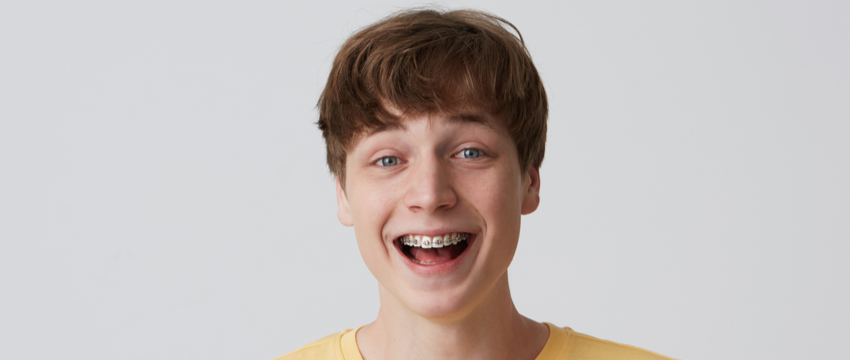What Causes Overcrowding?
A small jaw is often to blame when children have overcrowding, but the belief is that this stems from mouth breathing, and the jaw not receiving enough oxygen to develop fully. It is important to manage overcrowding because misaligned teeth are difficult to keep clean and are more susceptible to tooth decay and lots of other dental issues. Crowded teeth can wear against one another and also cause jaw problems if they are not resolved. Misaligned jaws can cause pain, further complications and headaches.
How To Fix Overcrowded Teeth?
Orthodontic treatment is the most effective way to correct overcrowded teeth, and should be considered as soon as all the permanent teeth have emerged. Years ago it was quite common for dentists to remove teeth when a patient presented with overcrowding, but unnecessary tooth removals can also lead to further complications later on. The best case scenario is generally to have an assessment and follow a course of orthodontic treatment to correct dental crowding.
What Orthodontic Options Are Available For Dental Crowding?
Today patients have a few different options when it comes to orthodontic appliances, but they can be categorised into two broad groups: removable and non-removable braces. The extent of your dental crowding will determine which is the most appropriate course of orthodontic treatment.
Removable braces
Aligners are called removable clear braces but they should only be removed for eating and drinking. In fact, for them to do their job and work effectively, they must be worn for at least 22 hours a day. Even though they are removable patients are not encouraged to take them out unnecessarily. The only reason they should be removed for eating and drinking is so that they are not damaged, discoloured or stained by the food and beverages you consume.
Clear braces and aligners are typically used by adult patients who need mild to moderate correction.
Non-removable braces
Permanent or non-removable orthodontics are appliances like traditional metal braces and lingual braces. Metal braces are used quite commonly to address dental issues like crowding because they can apply a great deal of pressure to the teeth and jaws. They are used commonly to address orthodontic problems in adolescents but they must be worn all the time.
If you have concerns about metal braces and want to try clear braces, it is worth noting that they are better suited to more mature patients who clean and look after them correctly. Within the category of non-removable braces patients have options like lingual braces (which are essentially traditional metal braces that are affixed to the underside of the teeth) and ceramic braces which are much more discreet and suitable for older patients.
Why Wearing A Retainer Is So Important
Some patients may have worn orthodontic braces when they were adolescents but may not believe that they work because their teeth did not stay in position. This is most likely because the patient didn’t wear their retainer for the prescribed period of time. Once you have completed your orthodontic treatment and your braces have been removed, you will be given a retainer to wear at night, in order to prevent your teeth from shifting back into their former positions.
This is a really important last step in your treatment that should not be neglected, otherwise it can undo all the work you have just spent 12 to 18 months addressing.
Are Clear Braces For You?
The only way to ascertain if clear braces will treat your dental crowding is to have a professional assessment. Your dentist will give you an examination, take some x-rays and some digital photographs before presenting you with a treatment plan and cost estimate.
Interested in finding a solution for overcrowded teeth? It’s always best to get a professional opinion. Please contact us for a convenient and confidential appointment.






